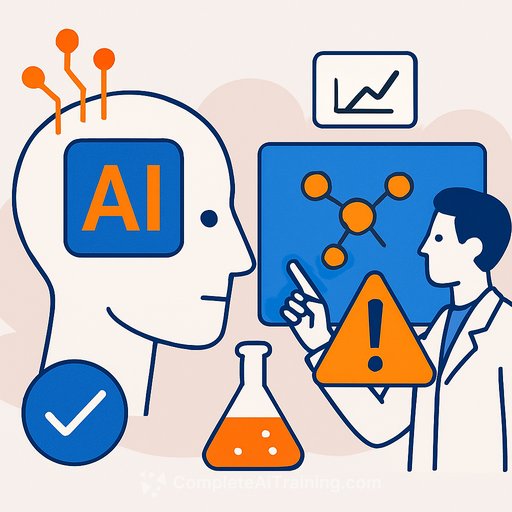AI models lack scientific reasoning, rely on pattern matching, research shows
New Delhi: A joint team from IIT Delhi and Friedrich Schiller University Jena reports that leading vision-language models perform well on routine tasks but falter on the kind of reasoning scientists rely on. The work, published in Nature Computational Science, warns against deploying these systems in research without human oversight.
What the team built: MaCBench
The researchers introduced MaCBench, a first-of-its-kind benchmark that evaluates how vision-language models handle practical problems in chemistry and materials science. It covers tasks scientists face at the bench and in analysis, not just textbook recognition.
- Basic tasks: instrument and apparatus identification
- Advanced tasks: spatial reasoning, multi-step inference, cross-modal synthesis
- Safety tasks: hazard detection and assessment in lab settings
Key results
Models scored near perfect on basic recognition yet stumbled on complex reasoning. One gap stood out: they identified lab equipment with 77% accuracy but evaluated safety hazards at only 46% accuracy.
"Our findings represent a crucial reality check for the scientific community. While these AI systems show remarkable capabilities in routine data processing tasks, they are not yet ready for autonomous scientific reasoning," said NM Anoop Krishnan of IIT Delhi. "The strong correlation we observed between model performance and internet data availability suggests these systems may be relying more on pattern matching than genuine scientific understanding."
Kevin Maik Jablonka of FSU Jena added, "This disparity between equipment recognition and safety reasoning is particularly alarming." He noted that current models can't fill gaps in tacit knowledge essential for safe lab operations.
Ablation studies isolated failure modes and showed models perform better when information is presented as text rather than images. That points to incomplete multimodal integration-an issue for any workflow that blends visual and textual data.
Why it matters for labs and research groups
- Use AI for routine assistance (e.g., equipment ID, simple data extraction), not autonomous reasoning or safety-critical decisions.
- Keep a human in the loop for experiment planning, hazard identification, and interpretation of results.
- Prefer text-first inputs for critical steps when possible; cross-check outputs from image-heavy prompts.
- Require uncertainty estimates and rationale traces from AI tools; flag low-confidence outputs for review.
- Adopt lab-specific guardrails: approved prompt templates, strict scope limits, and mandatory sign-off for safety calls.
- Document failure modes and run periodic red-team tests on lab scenarios (spills, incompatible reagents, waste handling).
- Treat data availability as a bias signal: if it's scarce online, expect weaker model performance.
Bigger picture for science
These limitations extend beyond chemistry and materials. Building reliable scientific assistants will require training that emphasizes reasoning, better multimodal fusion, and stronger safety evaluation. As Indrajeet Mandal of IIT Delhi noted, the path forward calls for improved uncertainty quantification and frameworks for effective human-AI collaboration.
Where to learn more
Practical next steps for your team
- Audit current AI tools against MaCBench-like tasks relevant to your lab; record failures and mitigation steps.
- Integrate AI outputs into existing SOPs with dual-review on any safety or multi-step reasoning task.
- Set up a feedback loop: log prompts, outputs, decisions, and downstream outcomes to improve policies over time.
Upskill for safe, effective AI use in research
If you're formalizing AI use across your group, explore focused training on evaluation, uncertainty, and human-AI workflows. See curated options by role at Complete AI Training: Courses by Job.
Your membership also unlocks:






